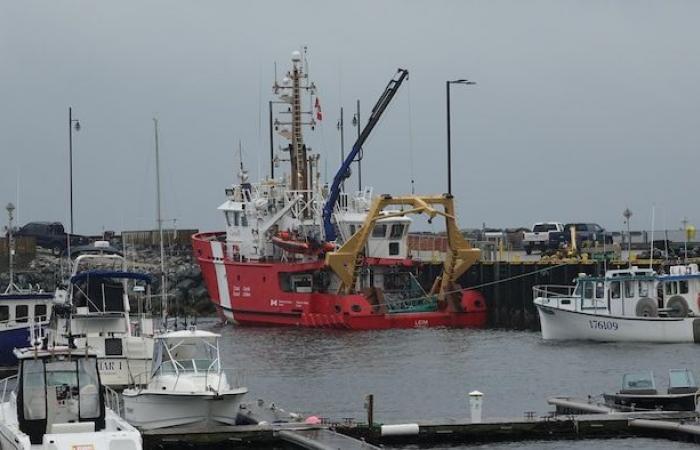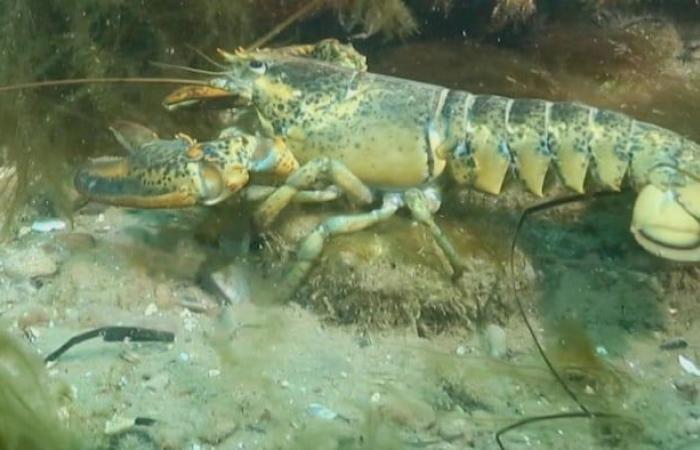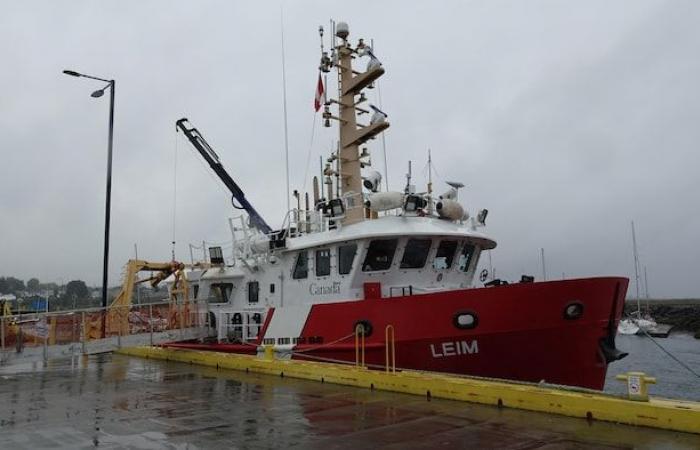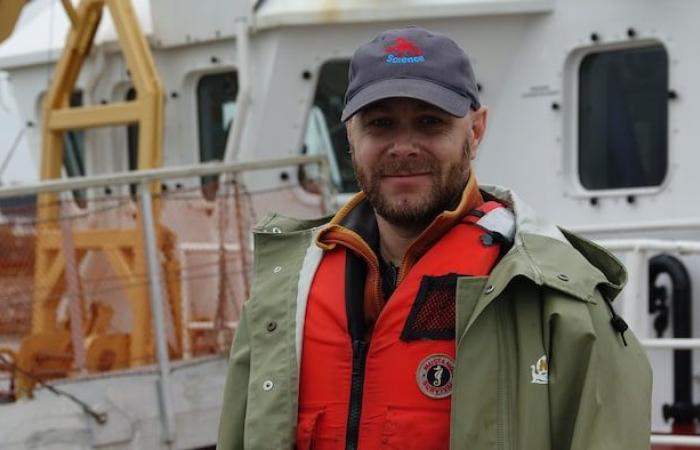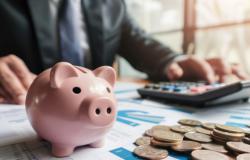For the first time in Gaspésie, Fisheries and Oceans Canada will conduct scientific surveys on lobster without using commercial fishermen’s equipment.
Until October 5, an imposing Canadian Coast Guard vessel will crisscross the Gaspé coast from Carleton-sur-Mer to Gaspé to collect lobster from around fifty locations using a trawl in order to gain a deeper understanding of the stocks of this crustacean.
Open in full screen mode
Four scientists from Fisheries and Oceans Canada will be on board the CCGS Leim, a 22-metre vessel, to take part in this scientific mission south of the peninsula.
Photo: Radio-Canada / Isabelle Larose
While this type of mission has been carried out every year in the Magdalen Islands for nearly 30 years, Fisheries and Oceans Canada had not yet managed to design a trawl that would be resistant and have a small footprint on the particularly rugged seabeds of the Gaspé.
There has never been an independent scientific survey of the fishery with a Coast Guard vessel on lobster that has been done in the Gaspé. There have been attempts, but they have been failures.
Benoît Bruneau explains that Fisheries and Oceans Canada’s scientific surveys were previously carried out in conjunction with fishermen, using traps, but this technique has many limitations for properly characterizing lobster populations.
With a trap, you harvest lobsters by attracting them with bait, so it influences the lobster that will be attracted
explains Mr. Bruneau. In some cases, males are predominant because they win intraspecific competition, but this is not necessarily representative of the entire surrounding lobster population.
Open in full screen mode
Using a trawl, scientists will be able to collect dozens of lobsters in a single area to get a better idea of the populations. The male-female ratio will be an indicator that can then be better studied. (File photo)
Photo: Radio-Canada
With the sampling that we are going to do, we will be able to fill the knowledge gaps that we currently have in the Gaspé region.
says the biologist from Fisheries and Oceans Canada.
50 trawl lines
In order to have more complete data on lobster populations, the four scientists participating in the research will delineate, using GPS coordinates, around fifty sampling stations between Carleton-sur-Mer and Gaspé.
They will return to these specific locations every year to collect crustaceans, always at the end of summer.
Depending on the density of lobster, at each station, we will make trawl hauls of 300 to 600 meters perpendicular to the coast to have different depths.
explains Benoît Bruneau. We don’t want to catch too many lobsters, just enough. We’re looking to have about a hundred lobsters, maximum 200 per haul.
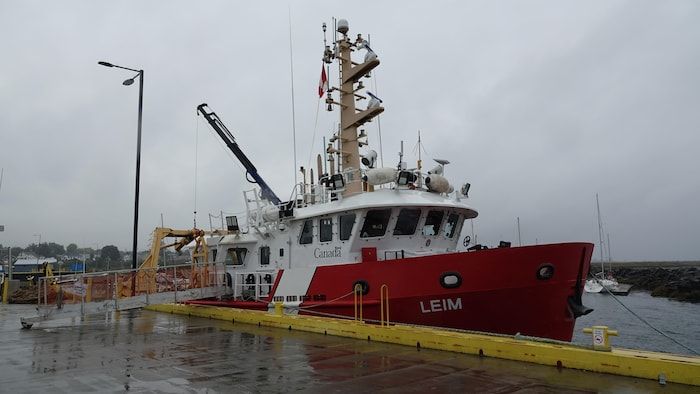
Open in full screen mode
Scientists will collect various data on the lobsters caught on the boat at the location where the lobsters were caught in order to release them back into the water in the same area.
Photo: Radio-Canada / Isabelle Larose
Biologists will collect various data from their catches before returning the crustaceans to the water where they were caught.
The goal is to characterize the population, not to break it.
Mr. Bruneau says that the Fisheries and Oceans Canada scientific trawl was designed with great concern for protecting the seabed.
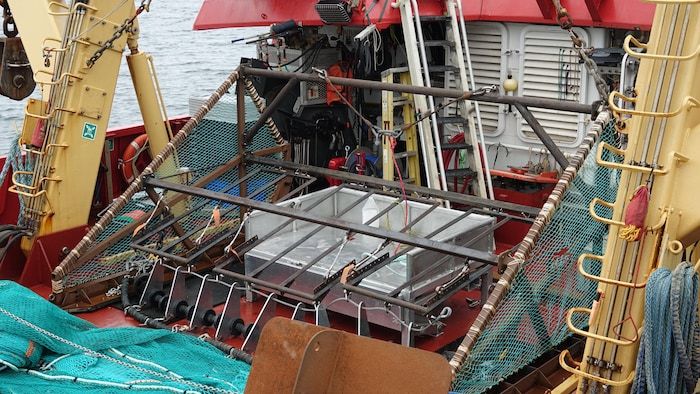
Open in full screen mode
The beam trawl designed specifically for the Gaspé has an opening of 4 metres, a height of 2 metres and a depth of 3 metres.
Photo: Radio-Canada / Isabelle Larose
We have looked into this a lot with technologies on fishing gear that do not exist anywhere else.
explains Mr. Bruneau. We tested the trawl in Rivière-au-Renard and found that the device does not even move large obstacles, because it passes over them and because it has a minimal footprint. The trawl shoes sink a maximum of two centimetres into the ground.
Fishermen deplore use of trawl
Although the scientific team at Fisheries and Oceans Canada is trying to reassure people about the limited impact of trawling on the seabed, some Gaspé fishermen are denouncing the use of such gear for scientific purposes.
The Regroupement des pêcheurs professionnels du sud de la Gaspésie (RPPSG) supports the ministry’s approach but still understands the concerns raised by some of its members.
Lobster fishermen in the Gaspé have always feared gear that drags along the bottom because we have regions that have been really damaged by scallop dredges.
explains the scientific director of RPPSGJean Côté. So it’s hard to convince them of the merits of a device that was created to do the least damage possible while having a representative sample.
It’s visceral here, the fear of fishermen seeing their seabed damaged. They fear that.
Jean Côté believes that this new scientific survey will allow Gaspé fishermen to have ministerial data as precise as in the Magdalen Islands and elsewhere in the Maritimes and that this will be complementary to the data already collected with the help of fishermen and their traps.
We see it as something good to have new data collected by the ministry which will enlighten us on points that we do not know correctly or that we interpret badly.
he said, pointing out that males are overrepresented in the data, which RPPSG currently has.
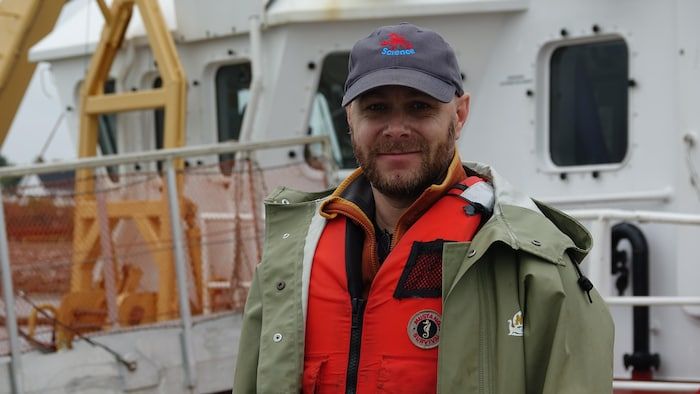
Open in full screen mode
Benoît Bruneau is an aquatic sciences biologist and responsible for stock assessments for Quebec.
Photo: Radio-Canada / Isabelle Larose
Fisheries and Oceans Canada biologist Benoît Bruneau believes the exercise will be beneficial for fishermen.
We know that the environment is changing, temperatures are warming
he explains. There are things that happen on the sea floor, and when you’re in a changing environment, it’s very important to get more data, diversify it, and make sure it’s good. It’s for the benefit of protecting the resource and its sustainability.
It is a tool for fishermen to exploit the resource for a long time to come.
concludes Mr. Bruneau.

